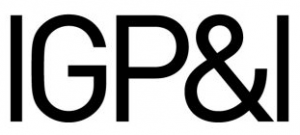With less than six months to implementation of FuelEU Maritime in EU and EEA trades, there has been little published advice regarding how to allocate responsibilities within time charterparties. Here, three people in Gard who have been working on these issues, discuss the key points for owners and charterers to consider when entering into time charterparties that include trade in the EU/EEA.

FuelEU Maritime is coming. Is your charterparty ready?
Published 01 August 2024
FuelEU Maritime regulations aim to reduce the greenhouse gas intensity of energy used by ships, encourage shore-side electricity and drive the take-up of renewable fuels of non-biological origin such as e-ammonia and e-methanol. With little published advice so far, BIMCO is currently working on a FuelEU clause for time charterparties, which is expected to be released in the second part of 2024.
The challenge
Preparing a single FuelEU clause for time charterparties that covers all eventualities will be challenging, because there are various methods for dealing with credits/penalties including banking, borrowing and pooling and each one can give rise to different and novel contractual issues.
Even though there is currently no “standard clause” we recommend that owners and charterers think carefully about how to deal with FuelEU in any charterparties that are currently being negotiated.
Some of the key issues for parties to think about in the context of FuelEU are below.
Administrative compliance
Parties can of course agree to exclude the EU/EEA from the vessel’s permitted trading range thereby avoiding application of the regulation. If EU/EEA trade is permitted, the default position would be for owners to be responsible for dealing with the administrative side of compliance including preparing and submitting monitoring plans.
Correspondingly, the charterers would likely be responsible for providing the owners with the information needed for proper reporting for example, by ensuring that bunker delivery notes comply with the FuelEU regulation and specify the greenhouse gas (GHG)-intensity levels. The parties may consider adding an explicit reference of such data sharing between charterers and owners in the FuelEU clause.
The vessel on delivery
The charterers may want the owners to state the GHG-intensity of the various grades of fuel on board at the time of delivery – as this may affect their choice of which fuel to use when trading in the EU/EEA.
If the vessel has traded in the EU/EEA in the calendar year before delivery, the charterers would likely also want to know the greenhouse GHG-intensity of the fuel consumed there. The effect of the vessel’s historical GHG-intensity prior to delivery would likely be for the owners’ account (and if the appropriate clause has been agreed in the previous fixture, it could be for the previous charterer at the time). For example, if a vessel’s EU/EEA trade in January-June 2025 is equivalent to a EUR 50,000 FuelEU penalty, when the vessel is delivered to a new charterer in July 2025, the new charterer will not want to be responsible for the January-June penalty. This has implications for how owners need to account for penalties/credits on re-delivery as discussed below.
Charterers’ choice of fuel
FuelEU focuses on the GHG-intensity of the fuel used. The charterparty will likely specify the grade(s) of fuel that owners agree to burn in the vessel’s engines, and if they are all conventional fuels then they will all result in excess GHG-intensity and penalties. If the parties want to expand the range of permissible fuels to allow for low-GHG fuels that meet the FuelEU requirements, then this must be made clear.
Where charterers do not have the option to supply low GHG-intensity fuels due to non-availability issues, there is a question if the owners should be entitled to refuse orders to sail to the EU/EEA without such compliant fuel on board. If the owners want to reserve that right it should be made clear, together with any restrictions on owners’ right of refusal, for example if charterers pay the expected FuelEU penalty in advance and the consequences if owners do so refuse and there are delays.
If the vessel is restricted to consuming conventional fuels only, then any EU/EEA trade will necessarily result in the vessel breaching GHG intensity limits.
When multiple fuels may be used, care needs to be taken to cover the speed/consumption warranties and the prices that apply to each.
Calculating compliance
For any trade in the EU/EEA, the vessel will incur a penalty or credit, depending upon the average GHG-intensity of the fuel used. The parties will want to specify how the owners are to inform the charterers of the vessel’s accruing compliance with FuelEU regulations - should it be each day, week, month, voyage, or some other period? The answer may depend on how closely charterers want to be able to monitor their sub-charterers’ compliance and also on the length of the charterparty period. That being said, it would be reasonable for the owners to provide such information to the charterers at least at the end of each calendar year and at the time of redelivery.
Further, how do the parties want to account for those penalties and credits – bearing in mind that the figures will not be verified and final until the following year?
In most respects, vessel owners do not extend credit to charterers - hire is paid in advance, bunkers on delivery. If the same approach is to be taken with FuelEU, then owners may ask for penalties to be paid as they are incurred, or at the end of each EU/EEA voyage. Such amounts could then be adjusted downwards if subsequent voyages result in credits, or upwards if there are more penalties.
Charterers may object to this on the grounds that no penalties will actually need to be paid by the owners until the figures are verified the following calendar year. If this approach is taken, the owners would be unsecured for the penalty amounts until just before they fall due. Again, the answer may depend on when charterers can themselves obtain payment for penalties from their sub-charterers. Similar to the BIMCO ETS Clause, charterers may agree to reimburse the owners prior to the verification stage, namely on a monthly basis for the incurred penalties of the previous month.
Borrowing
This is a method by which a penalty for a vessel’s excess GHG-intensity can be dealt with by borrowing from anticipated future FuelEU compliance credits. If the charterers are to have this as an option for dealing with FuelEU penalties, then it should be made clear. Presumably owners would only agree to allow borrowing if the charterparty was known to extend for long enough into the borrowing period and owners were satisfied with the charterers’ creditworthiness. In light if this, we would expect that borrowing may often be prohibited as a charterers’ compliance method.
Who has the benefit of a FuelEU surplus?
If the charterers incur the extra cost of buying fuel that complies with the EU’s intensity limits then as well as avoiding/reducing penalties, it may result in the vessel being in surplus. Just as charterers would generally be responsible for FuelEU penalties that arise from their choice of fuel, it would seem logical that they are also entitled to the benefit of credit earned from their choices.
Another option may be for owners and charterers to share the cost of supplying low-GHG fuels, and then share the benefits, for example by pooling credit.
Banking
One way to deal with a credit is to “bank” it so that it can be used to set-off against penalties incurred the next years. We expect there would be no objection from owners to this being an option for charterers, although it is of course unlikely to be exercised if the charterers do not expect the charter to continue into the next year.
Pooling
The second option for handling a credit is to pool the vessel in credit with other vessels that have penalties. Depending on the fuel type and amounts consumed, some analysis has shown that very large credits could be used to off-set the penalties of many vessels. Credits can therefore have a considerable value.
If a charterer wants to be able to order owners to pool the vessel with other vessels in order to realise a FuelEU credit, they should seek an express right to do so. An ability to pool extends the charterers’ options considerably, and it therefore likely increases the chances they will make choices that result in the vessel positively complying with the GHG-intensity limits.
Although allowing pooling is therefore generally to be encouraged, owners will probably want to include some limits/restrictions to charterers’ right to pool the vessel with others. For example, owners may want to veto a pool that contains vessels they are concerned about for example due to sanctions or other compliance issues.
If there is to be a right to pool the vessel, it would be wise to include provisions that specify how much detail charterers need to give about an intended pool, and how long owners have to object or seek more information.
If a vessel is to be pooled with others the owners will likely need to enter into a pooling agreement. It is hard to know now what terms such an agreement may contain, and of course those terms may impose obligations on owners, so charterers would likely have to expressly or impliedly indemnify owners for consequences arising from owners signing a pooling agreement at their direction.
Finally, it is worth remembering that a charterer may wish to pool a vessel as a way of avoiding having to pay penalties for excess GHG-intensity. Pooling may sometimes be a cheaper way of dealing with penalties than simply paying them, so some charterparties may need clauses that cover pooling, even if the vessel is never expected to be in surplus.
How much benefit is obtained by pooling?
The mechanisms by which FuelEU pools will be formed and agreed are still unclear, but a party with a FuelEU credit will surely only agree to pool it if they obtain some significant value in return for sharing their credit. How much of the credit actually recovered will depend upon a number of factors, which may include transaction costs such as broker fees, supply/demand, the size of the credit, and potentially even the vessel’s characteristics.
It will also take some time for a pooled credit to be realised and the value recovered. For example, if a FuelEU credit is earned in a voyage that takes place in January 2025, payments will presumably only be made once the pool is confirmed in June 2026.
Although the notional value of a FuelEU credit could be calculated immediately, the actual amount realisable may well be less, and it would not be finally known and recovered until the next calendar year. For these reasons, in our view it will be difficult to persuade owners or charterers to pay the face value of a FuelEU credit at a time before the credit can actually be realised.
Redelivery
A vessel may be re-delivered by a charterer with a FuelEU credit or deficit (penalty). The parties need to consider what happens then. If the vessel is in credit, should the charterers be able to force owners to pay that credit on re-delivery – even though it may not be realised for some time, and the actual amount recovered may be smaller than its face value? If charterers are only entitled to the actual amount recovered for the credit, how are they to be secured in the interim, and how should the parties cooperate to maximise the recovery of the credit?
If the vessel is in deficit on redelivery and facing a penalty, should it be paid by charterers on or prior to re-delivery? The charterer may argue that doing so would be unfair because the penalty may not actually be paid by the owners for many months. On the other hand, there is a risk to owners if the vessel is re-delivered and they have no security for the penalty. Is an escrow arrangement an option?
One final point to note in this section is that if the vessel is re-delivered in the EU/EEA then this will have an impact on FuelEU liability for the next voyage. If the owner ballasts the vessel to the place of delivery to the next charterer, that voyage may be subject to an additional cost under FuelEU. Alternatively, if the vessel is delivered to the next charterer at the same place of re-delivery, that next the charterer may want to pay less for the vessel to take account of any FuelEU costs arising from delivery there. This situation also applies to the EU’s ETS, so that where the re-delivery range covers the EU, the owners may want to consider how extra costs arising from re-delivery there should be handled.
Impact on subsequent charterparties
Owners should bear in mind that if they agree to allow charterers to direct how the vessel will be pooled after re-delivery, whether to realise a credit or settle a penalty, this will restrict the pooling rights they can give to subsequent charterers for the rest of the calendar year.
Also bear in mind that if a vessel incurs a penalty for more than one year in a row, the penalty rate will increase by 10% each time. This means that if a vessel incurs a penalty in 2025 and is then delivered to a new charterer in 2026, the owners will need to be aware that any penalty in 2026 will be 10% higher. Should the new charterer be warned of this, or should liability for the extra 10% penalty be passed to the previous charterer, or should the owners cover it? Over time, years of continuous penalties will presumably make a vessel less commercially attractive because of the higher cost of exceeding the GHG-intensity limits. This should incentivise owners to find a charterer that would use low GHG-intensity fuel that creates a surplus/credit.
Summary
As can be seen from the discussion above, the FuelEU Regulation creates many complex issues that it will be hard to cover in a single charterparty clause. A BIMCO clause is expected in the next few months, but it might not cover every single point above, and so parties may still have to think through for themselves how they want to handle these issues.
For longer-term charterparties some of the issues identified above will be simpler to deal with, because the charterers will face the risks of their own trading decisions. For example, if they decide to avoid a FuelEU penalty by borrowing from the next year they will themselves have to deal with the shortfall the next year. For owners and disponent owners that charter out for shorter periods of time, the complications may intensify. As an example, if a vessel is chartered out to three different charterers in a calendar year, all of which trade in the EU, then allowing one charterer to pool the vessel to deal with any FuelEU penalties (or credits) will prevent the other charterers from having the same option.
We think it is likely that some market practices will develop to help deal with some of these issues, but for the first few months there will be a lot of discussion as the consequences of the various different options are explored.
The authors thank Louis Shepherd for his assistance with this article.





